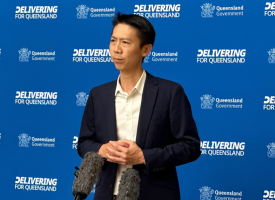Implementing health workforce plan must be a priority for government
The Australian Medical Association has welcomed today’s health workforce summit and says implementing the National Health Workforce strategy must be prioritised by the federal government.

AMA President Professor Steve Robson is calling on the government to fund the urgent implementation of the strategy.
“This strategy was years in the making, and it now must be funded and implemented as a matter of urgency, with data driven medical workforce supply and demand modelling needed as a priority,” Professor Robson said.
“The modelling will guide medical student and doctor in training numbers ensuring they are in line with community need. If these processes recommend changes to medical school intakes, or training numbers for specialities forecast to be in under or over supply we should follow them.”
Professor Robson said a public hospital funding boost with 50/50 uncapped funding from the state and federal governments would also help to address workforce pressures in the public system and provide better access to care for patients.
“The AMA is calling for 50/50 funding because we know it will free up some funds for the states to build the extra beds, employ the extra staff and fix our hospital crisis — a crisis that was developing well before COVID-19 hit Australia.
“Failure to address the current public hospital and primary care crises before recruitment for 2023 will force more healthcare staff out of the system due to stress and burnout. This ultimately impacts on access to care.
“The decision by the government to proceed with cuts to key Medicare funded telehealth items implemented during the pandemic is also exacerbating patient access issues and disproportionately affecting some of the most vulnerable Australians, including those in rural and remote areas.
“We must improve access to services for patients by removing barriers to using MBS funded telehealth, particularly by expanding the availability of telephone consultations.”
The AMA has a comprehensive strategy addressing health workforce issues including:
-
promoting a career in general practice by growing prevocational training opportunities in general practice and improving employment conditions for General Practice Registrars so they match their hospital-based colleagues
-
expanding the Commonwealth Government’s Specialist Training Program to 1700 places over the next term of Government, giving priority to rural areas, generalist training and specialties that are under-supplied.
-
investing in regional teaching hospitals to ensure they have sufficient capacity to host STP-funded non-GP specialist registrars.
-
implementing the National Rural Generalist Pathway nationally, and a commitment to ongoing funding.
-
encouraging end-to-end rural medical training programs, with a view to ensuring they provide positive rural exposure and lead to retention of rural medical practitioners.
-
expanding capacity for remote learning (training and educational opportunities, especially for trainees in regional/rural sites, and potential remote supervision); and
-
promoting regional training and research teaching hospital hubs to grow non-GP specialist capacity outside metropolitan areas.



